12 White Flowering Trees + Growing Guide Charts

This post follows our research editorial guidelines.

A white flowering tree is a joy all year round. From its pale blooms in spring and summer then the fruit that follows, to autumnal fire of color and the bare beauty of winter, they never stop providing charm in the garden.
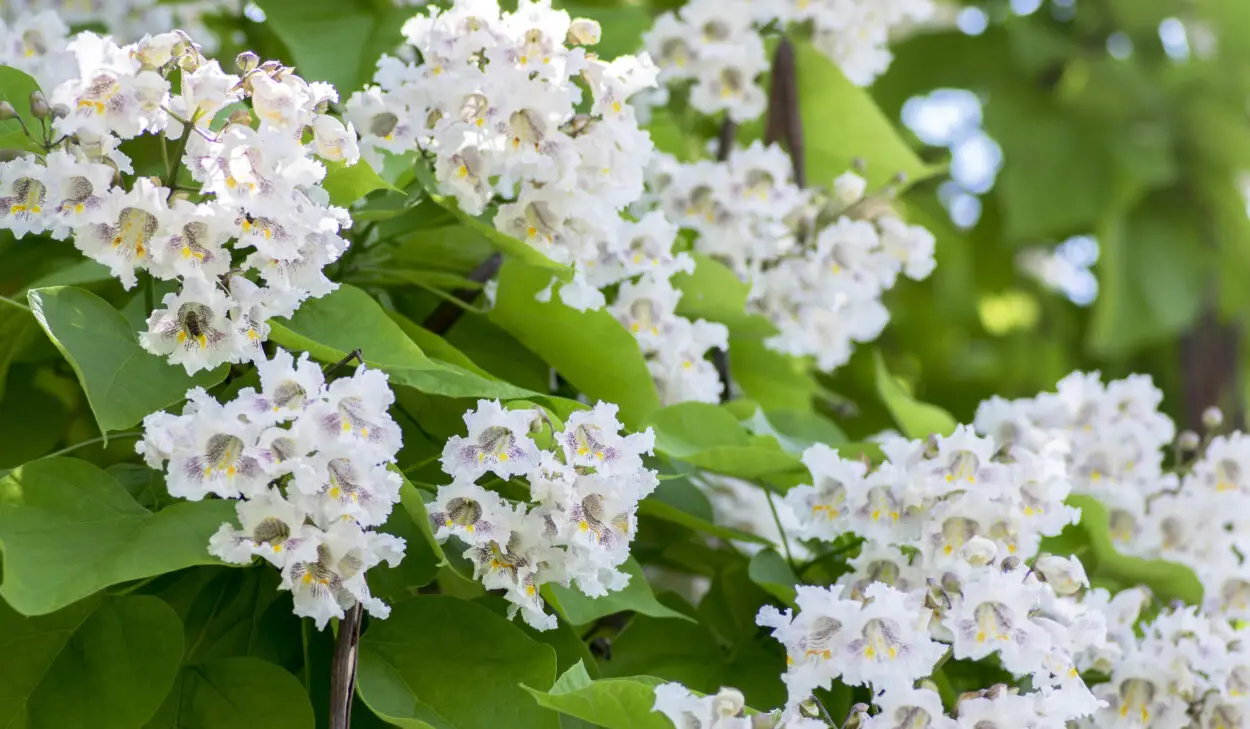
Here’s some of my favorite white bright bloomers for you to consider growing in your garden or yard.
Table of Contents
1. Kousa dogwood (Cornus kousa)

For year-round appeal, it’s hard to top the kousa dogwood. In the early spring, it’s densely covered with small white blooms that mature by summer into plump red raspberry-like fruit.
In the fall it flushes a rich reddish-purple and scarlet, and through winter shed bark gives the trunk and limbs an attracted mottled appearance. Dogwoods are available in a wide variety including pink flowering trees.
| Botanical Name: | Cornus kousa |
| Growth Rate: | Slow |
| Approximate Mature Size: | Up to 10m (33’) high and wide |
| Native Range: | East Asia |
| Hardiness Zones: | 5 to 8 |
| Soil Needs: | Organically rich, well draining loamy or sandy soils |
| Exposure: | Full sun to partial shade |
| Blooming Period: | Late spring to early summer |
| Water needs: | Moderate |
2. Catalpa (Catalpa speciosa)
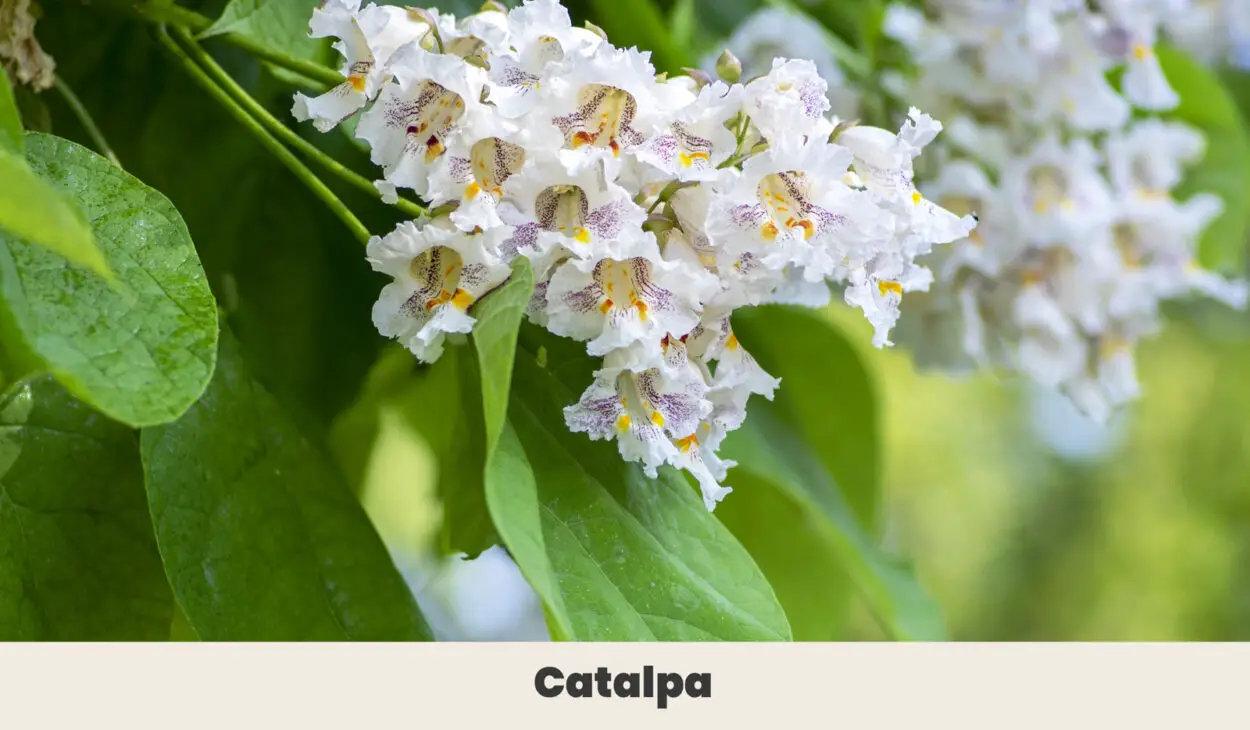
The catalpa tree is a deciduous American native known for its spectacular heart-shaped leaves and its abundant white trumpet-like flowers. It’s an important tree ecologically, as it’s the host tree for the lovely catalpa sphinx moth.
It also supplies hummingbirds, bees and other nectar lovers, and will grow in wet conditions that other trees may find challenging.
| Botanical Name: | Catalpa speciosa |
| Growth Rate: | Moderate to rapid |
| Approximate Mature Size: | Up to 30m (98’) tall and 15m (50’) wide |
| Native Range: | United States |
| Hardiness Zones: | 4 to 8 |
| Soil Needs: | Prefers moist to wet loamy soils, but will tolerate most |
| Exposure: | Full sun to partial shade |
| Blooming Period: | Late spring to summer |
| Water needs: | Moderate to high |
3. Flowering Crabapple (Malus spp.)

Pretty as a princess and just as fussy, the flowering crabapple is a spectacular tree that makes you work for those beautiful blossoms. They do tend to be a bit disease prone, especially in warmer parts of the world where bacterial and fungal issues may take the tree out before it matures enough to bloom.
But once they do, you’ll be rewarded with astonishing cascades of delicate apple blossoms, fragrant and almost ephemeral. There’s a reason they’re so popular despite all the effort.
| Botanical Name: | Malus spp. |
| Growth Rate: | Moderate to slow |
| Approximate Mature Size: | Varies by cultivar |
| Native Range: | Worldwide range depending on species |
| Hardiness Zones: | 4 to 8 |
| Soil Needs: | Organically rich, well draining loams |
| Exposure: | Full sun to partial shade |
| Blooming Period: | Late spring |
| Water needs: | Low to moderate |
4. Hawthorn (Crataegus spp.)
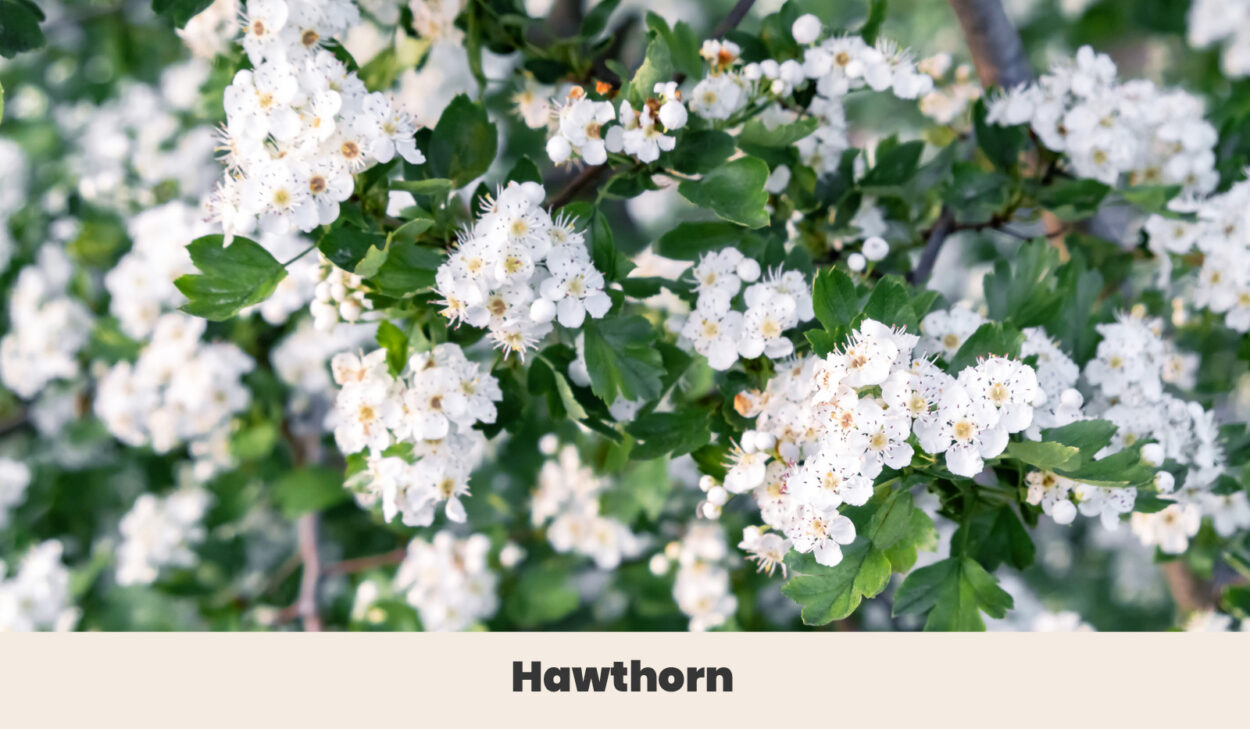
Versatile hawthorn is easy to grow, with fantastic froths of white flowers and part red berries. They’re a common sight in English hedgerows and cottage gardens and can be trimmed into a shrub or hedge as well as allowed to grow to their full magnificent height.
The fruit is edible and popular with birds but be warned – many cultivars also sport wicked three-inch long thorns.
| Botanical Name: | Crataegus spp. |
| Growth Rate: | Moderate |
| Approximate Mature Size: | Up to 15m (50’) high and wide |
| Native Range: | Asia, Europe, North Africa, North America |
| Hardiness Zones: | 3 to 8 |
| Soil Needs: | Tolerates most soils but prefers moist loam |
| Exposure: | Full sun to partial shade |
| Blooming Period: | Spring |
| Water needs: | Moderate |
5. Flowering Mazzard cherry (Prunus avium)

Cherry blossoms are one of nature’s greatest gifts, and the flowering mazzard cherry produces a bright white iteration of the iconic flower. They result in a luscious sweet red cherry once the blossoms have done their work.
It’s also an excellent climbing tree, a critical feature when small members of the gardening team are keen to gobble up every last cherry.
| Botanical Name: | Prunus avium |
| Growth Rate: | Moderate |
| Approximate Mature Size: | 9m (30’) high and wide |
| Native Range: | Europe and asia |
| Hardiness Zones: | 3 to 8 |
| Soil Needs: | Will tolerate most soil types |
| Exposure: | Full sun |
| Blooming Period: | Spring |
| Water needs: | Moderate, drought tolerant once established |
6. Black Chokeberry (Aronia melanocarpa)

A compact tree that sometimes grows as a shrub, this deciduous plant is a fall stunner. Its leaves flush crimson red each year, scattering to reveal rugged textured bark beneath.
Black chokecherry flowers are just as lovely, tight clusters of five-petalled star flowers speckled with scarlet anthers. They turn to rich dark fruit beloved by wildlife.
| Botanical Name: | Aronia melanocarpa |
| Growth Rate: | Moderate |
| Approximate Mature Size: | 3m (10’) high and 2m (7’) wide |
| Native Range: | Eastern United States |
| Hardiness Zones: | 3 to 8 |
| Soil Needs: | Tolerates most soils including poorly draining and wet soils |
| Exposure: | Full sun to partial shade |
| Blooming Period: | Spring |
| Water needs: | Low |
7. Carolina Silverbell (Halesia Carolina)

If you’re as taken with the flowers of the dainty Lily of the Valley or secretive Solomon’s Seal but would like something larger, then look no further than the Carolina silverbell.
It features arching stems of delicate, dreamy white bell flowers that hang from the previous year’s growth. Its care needs are easily met, and you can even trim it down to a shrub if you’d like to keep those magical flowers in easy view.
| Botanical Name: | Halesia Carolina |
| Growth Rate: | Moderate |
| Approximate Mature Size: | Up to 20m(66’) tall and 10m (33’) tall |
| Native Range: | Southeastern United States |
| Hardiness Zones: | 4 to 8 |
| Soil Needs: | Tolerates most soil types |
| Exposure: | Full sun to partial shade |
| Blooming Period: | Spring |
| Water needs: | Moderate |
8. White Fringe Tree (Chionanthus virginicus)

White fringe trees grow in plump round masses, and when covered in their fluffy white flowers they look almost like a huge fuzzy pompom. Each flower is a tassel-like cluster of white petals, making for a playful overall effect.
They’re a North American native beloved by birds and insects for their fantastically sweet-smelling flowers the abundant olive-like berries that follow.
| Botanical Name: | Chionanthus virginicus |
| Growth Rate: | Slow |
| Approximate Mature Size: | 6m (20’) tall and wide |
| Native Range: | Eastern United States |
| Hardiness Zones: | 3 to 9 |
| Soil Needs: | Prefers moist, well nourished soil but will tolerate most types |
| Exposure: | Full sun to partial shade |
| Blooming Period: | Late spring |
| Water needs: | Moderate |
9. Angel’s Trumpet (Brugmansia spp)
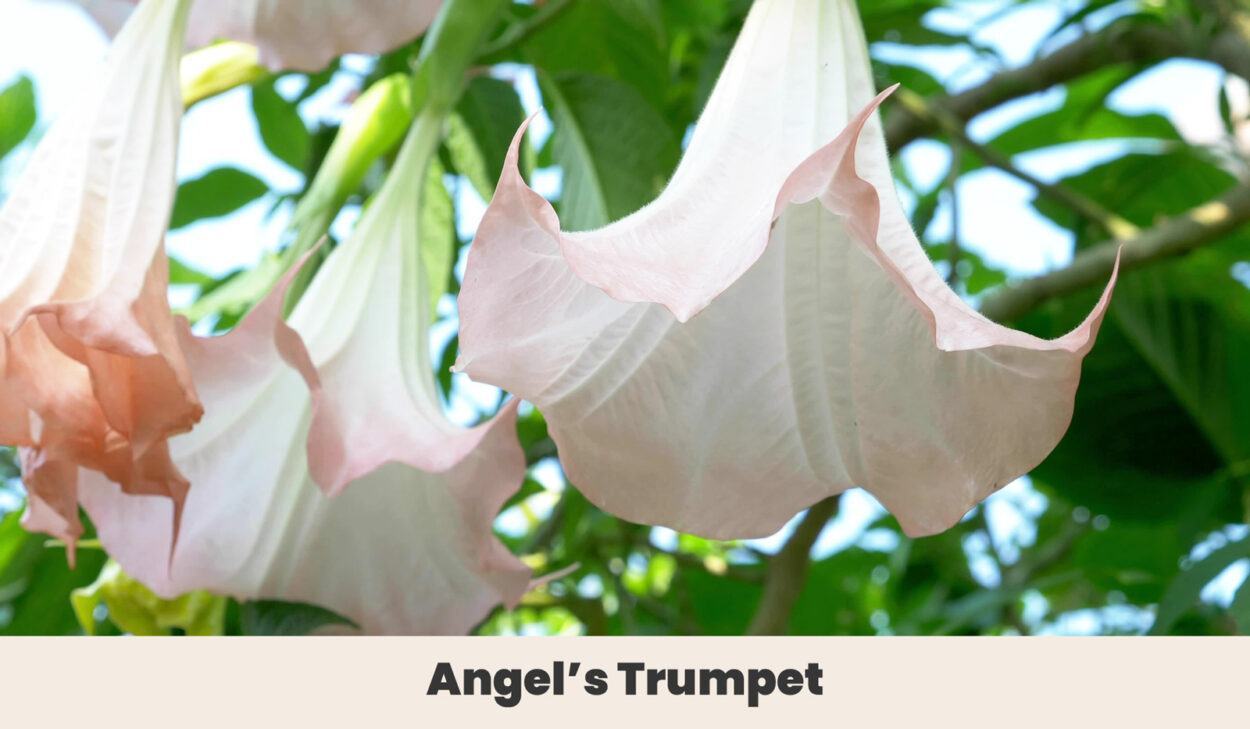
Arguably one of the largest nightshades, the angel’s trumpet is a spectacular plant boasting truly massive flowers. Each pale bloom can reach a foot or more long, is powerfully scented, and radiantly white.
They’re especially fragrant at night, and they’re popular pit stops for nectar-loving moths, butterflies and hummingbirds. Plant with caution, however, as every part of this plant is spectacularly toxic.
| Botanical Name: | Brugmansia spp. |
| Growth Rate: | Rapid |
| Approximate Mature Size: | 4m (14’) tall and wide |
| Native Range: | South America |
| Hardiness Zones: | 10b to 11 |
| Soil Needs: | Tolerates most soils |
| Exposure: | Full sun to partial shade |
| Blooming Period: | Spring to summer |
| Pruning: | Prune to promote flowering and maintain shape |
| Water needs: | High |
10. Bridal Wreath Spirea (Spiraea prunifolia)

The arching branches of the bridal wreath spirea evoke all the joy of a spring wedding. They form a low, sprawling shrub or elegant arching tree with a bit of pruning.
The flowers are small and double-petaled, a crisp shade of bright white. They benefit from regular hard pruning once flowering is complete, or they tend to become leggy.
| Botanical Name: | Spiraea prunifolia |
| Growth Rate: | Moderate |
| Approximate Mature Size: | Up to 2.5m (8’) tall and wide |
| Native Range: | China and Taiwan |
| Hardiness Zones: | 5b to 8a |
| Soil Needs: | Most well-draining soils |
| Exposure: | Full sun |
| Blooming Period: | Spring |
| Water needs: | Moderate, drought resistant once established |
11. Bigleaf Magnolia (Magnolia Macrophylla)
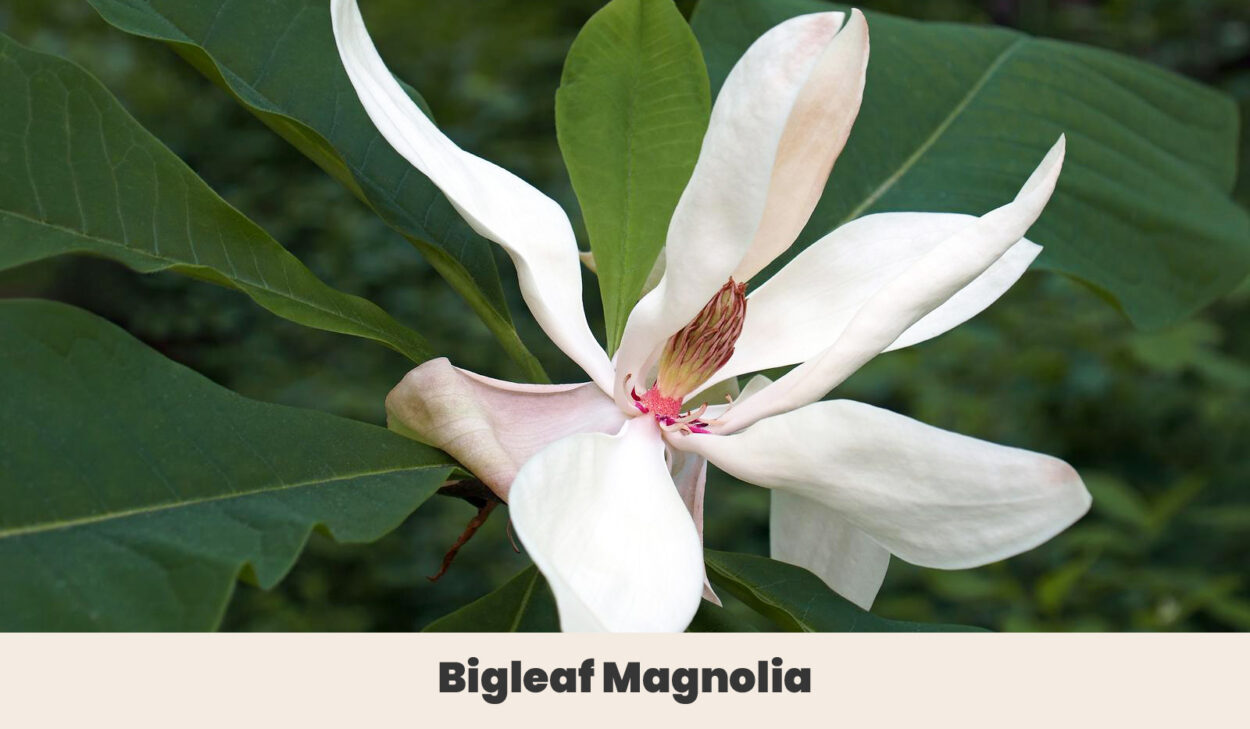
There’s no doubt how the Bigleaf Magnolia got its name. It produces some truly huge leaves, up to two and a half feet long. They’re the largest leaves of any native North American plant and do best planted away from large winds that may tear the foliage.
Their flowers are not as spectacular but nonetheless, radiate a stylish Southern charm. They’re open blowsy blooms with a heady, sweet fragrance that suffuses the whole area around the tree.
| Botanical Name: | Magnolia Macrophylla |
| Growth Rate: | Slow |
| Approximate Mature Size: | Up to 12m (40’) tall and wide |
| Native Range: | Southeastern United States, Mexico and the Caribbean |
| Hardiness Zones: | 5 to 8 |
| Soil Needs: | Organically rich, well-draining soils of most types |
| Exposure: | Full sun to partial shade |
| Blooming Period: | Spring to early summer |
| Water needs: | Moderate |
12. Canadian Serviceberry (Amelanchier Canadensis)
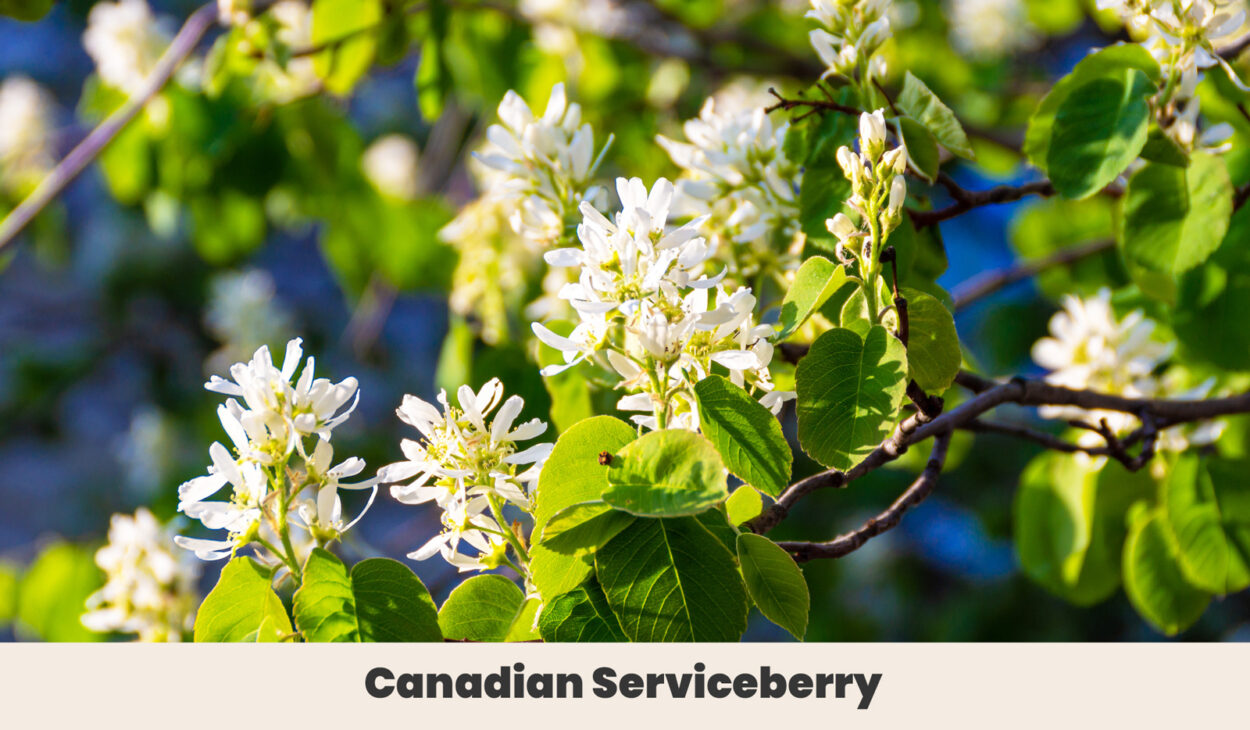
The Canadian Serviceberry is small but spectacular, an early bloomer that transforms each winter into a glowing mass of pure white blooms. It flowers before its new leaves emerge, and can seem almost like a ghost glowing in hidden woodland grottoes.
In the garden it’s a bit more down to earth, a low-maintenance plant that can be trimmed into a shrub or trained into a tree.
| Botanical Name: | Amelanchier Canadensis |
| Growth Rate: | Moderate |
| Approximate Mature Size: | Up to 9m (30’) tall and wide |
| Native Range: | Eastern North America |
| Hardiness Zones: | 4 to 8 |
| Soil Needs: | Tolerates most soil types if drainage needs are met |
| Exposure: | Full sun to partial shade |
| Blooming Period: | Spring |
| Water needs: | Moderate |
FAQ
What Tree Blooms White Flowers In Early Spring?
There are a few early bloomers on this list. Hawthorn, Mazzard cherry, spirea, and Canadian serviceberry can all be relied on to flower in the early spring.
What is a white blooming tree that smells good?
It’s often noted that white flowers make up for a lack of gaudy color with powerful perfumes. Catalpa, hawthorn, crabapple, Mazzard Cherry, fringe-flower and magnolia are all deliciously scented. Angel trumpet also has a wonderful aroma, most noticeable at night.
Final thoughts
White blooming trees are stately residents in my garden. I love to linger in their summer shadows and soak in the ghostly glory of their radiant white blooms. Though they flower only a little, their benefits shine on all year round.
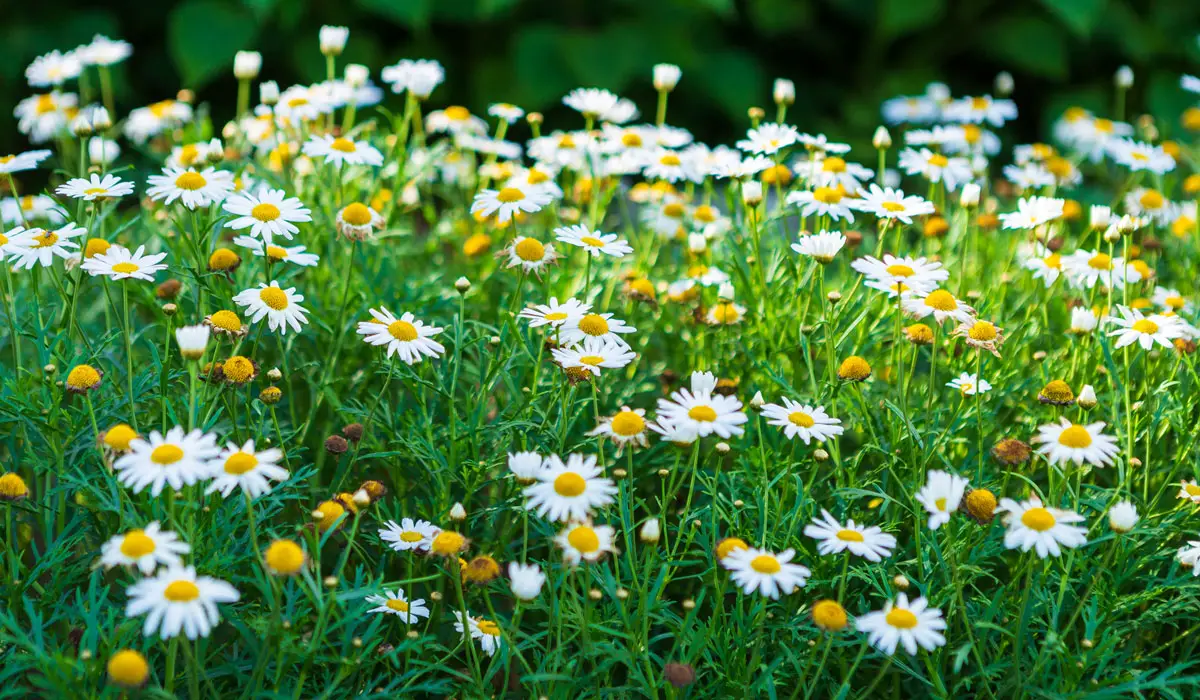
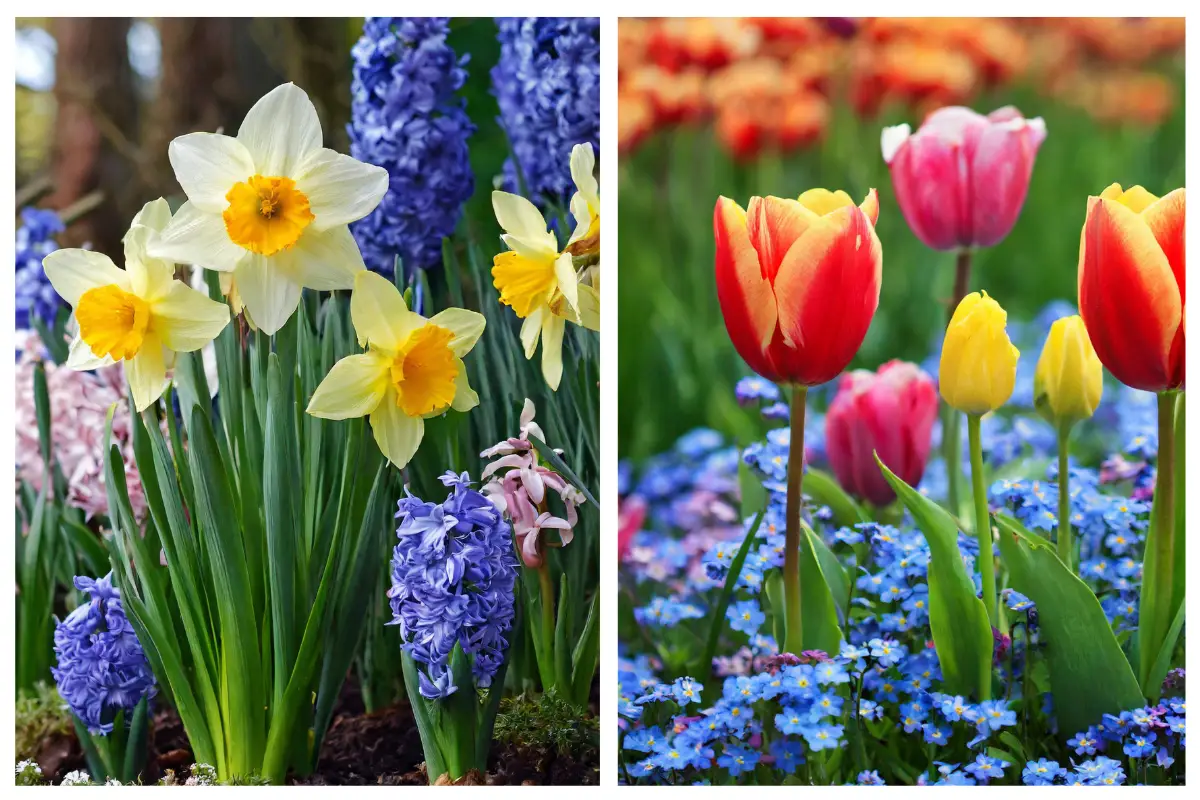
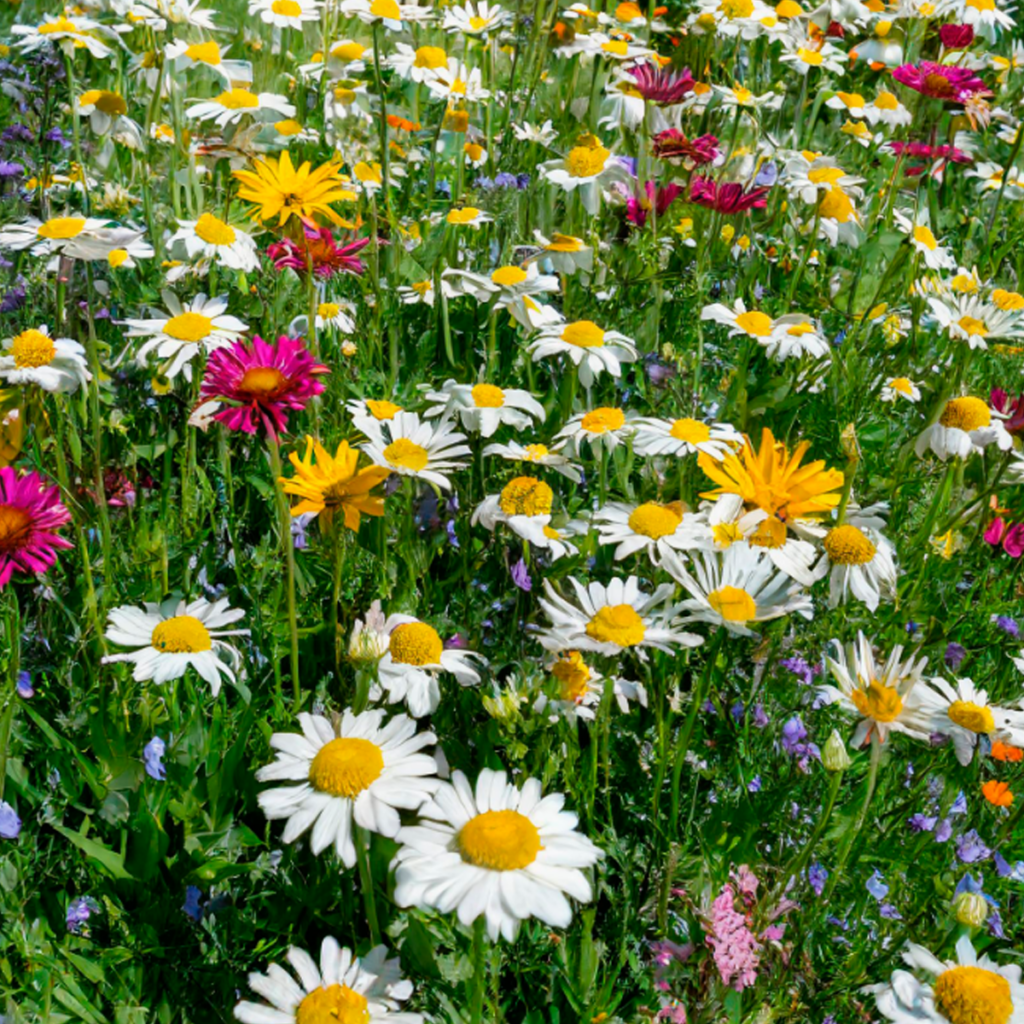
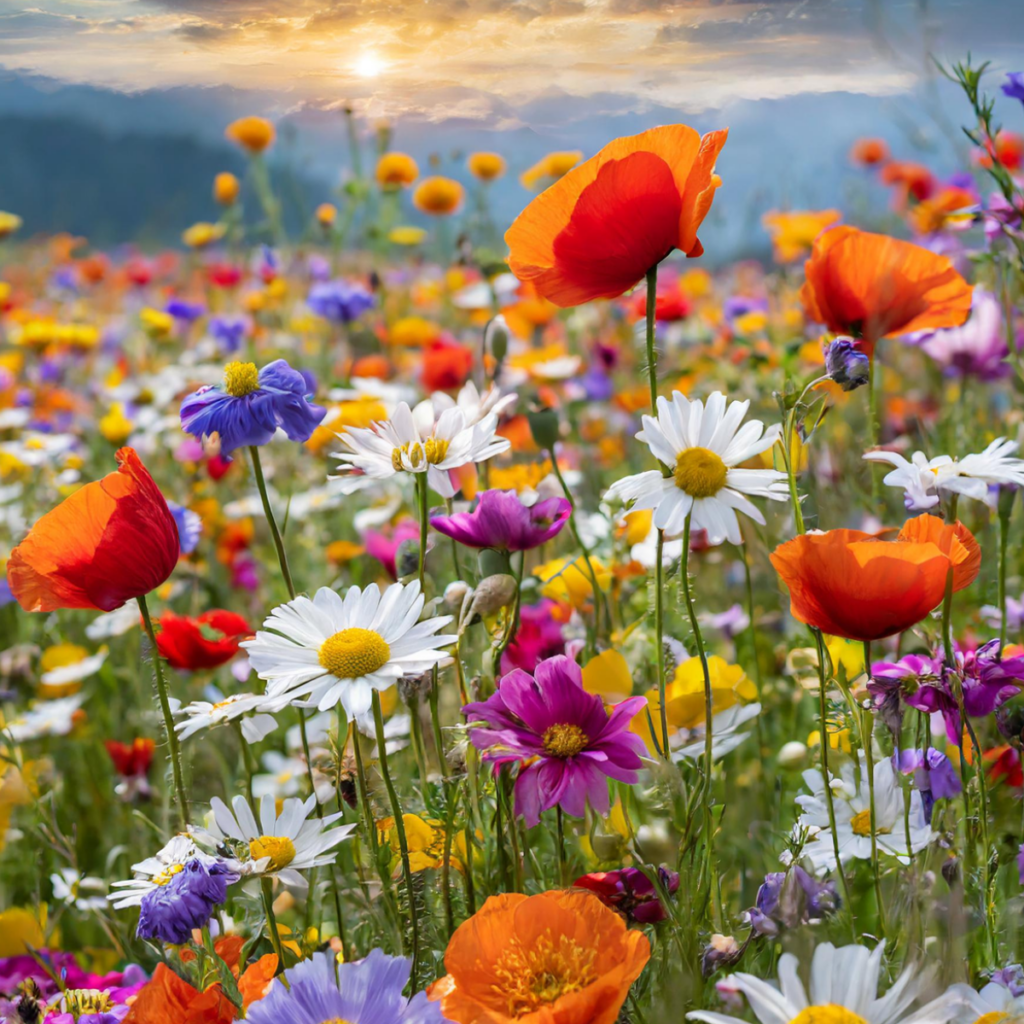

I have read some excellent stuff here Definitely value bookmarking for revisiting I wonder how much effort you put to make the sort of excellent informative website
Thank you for the kind words!